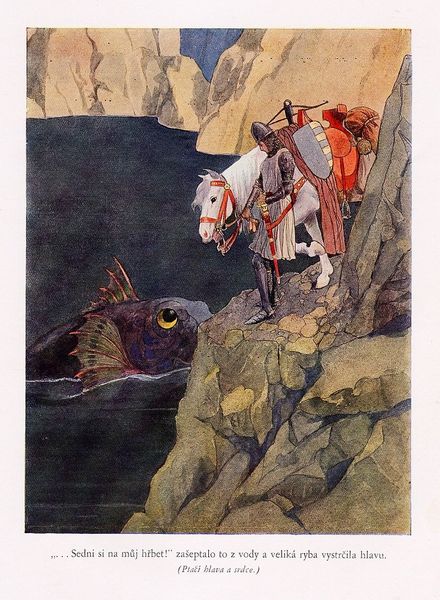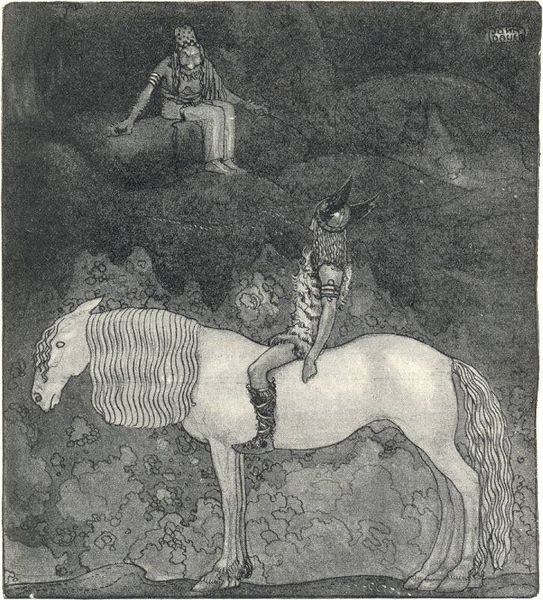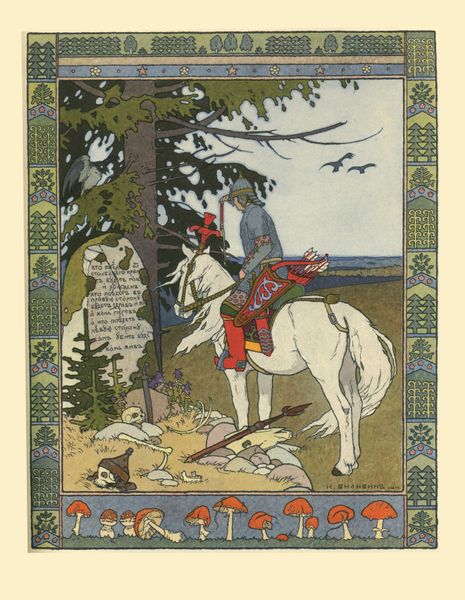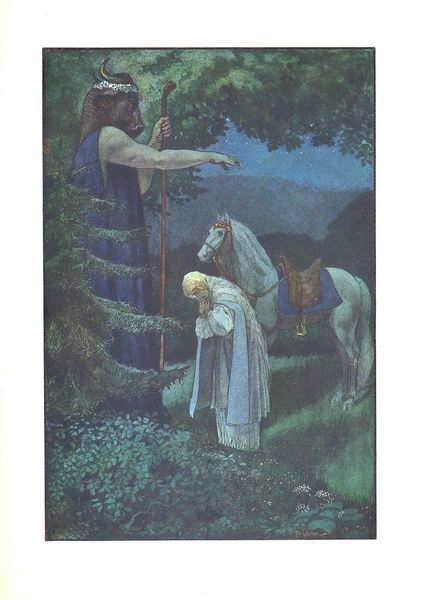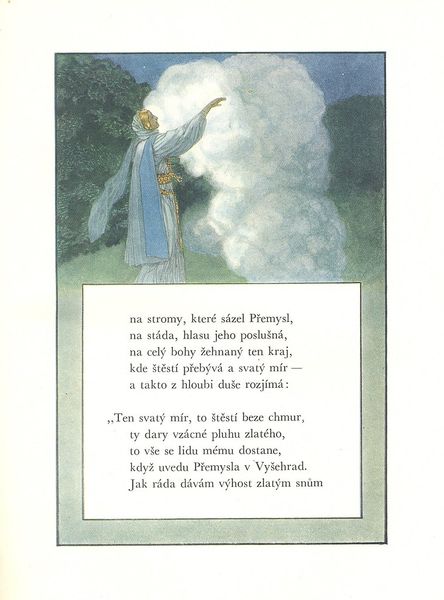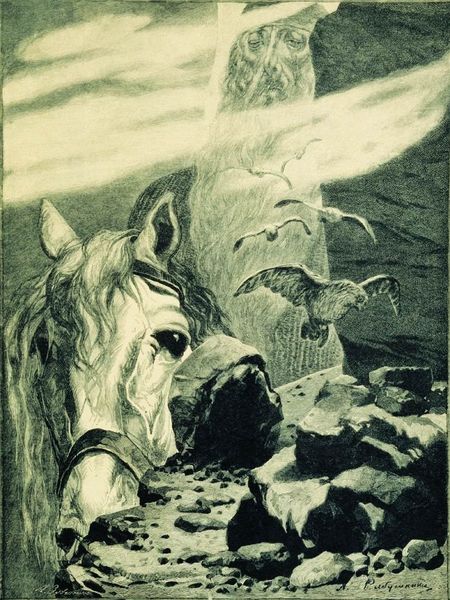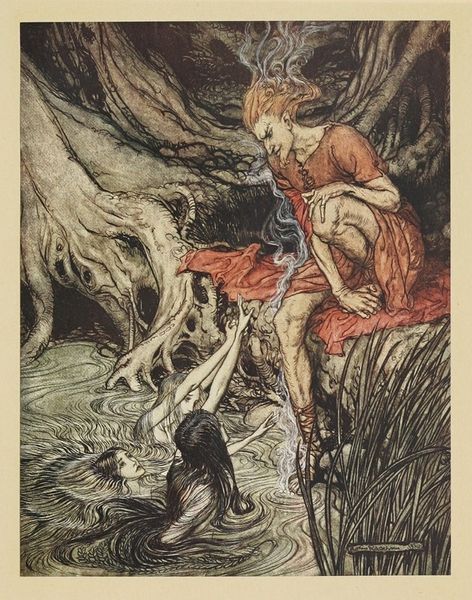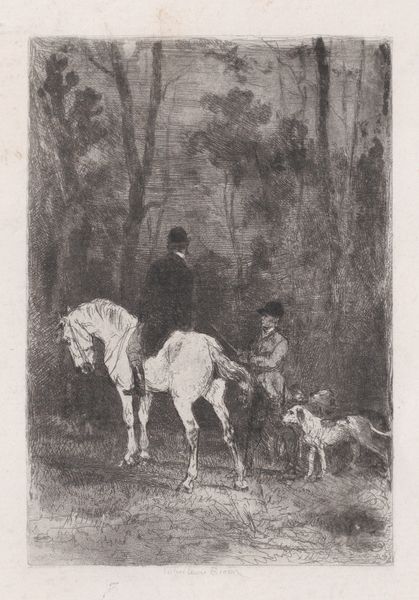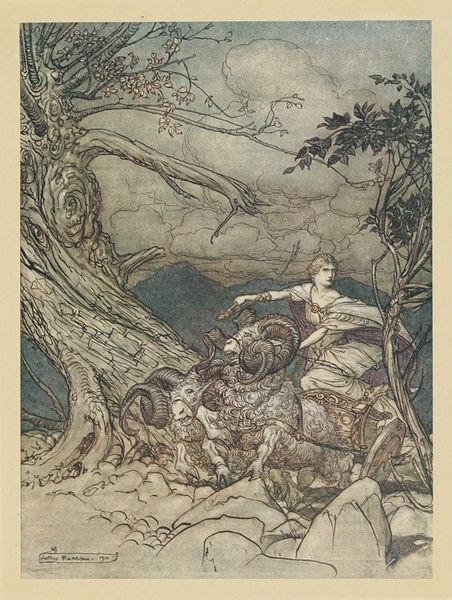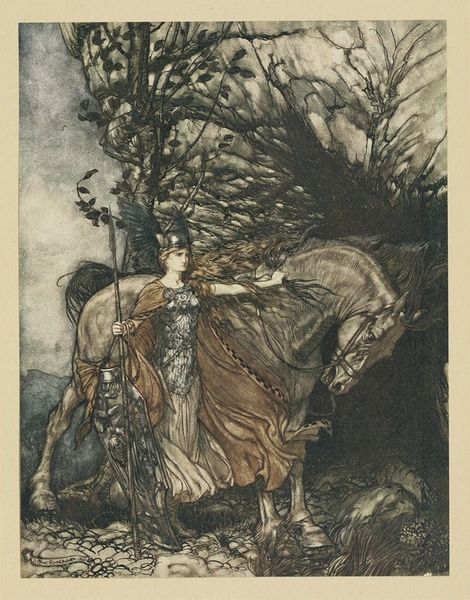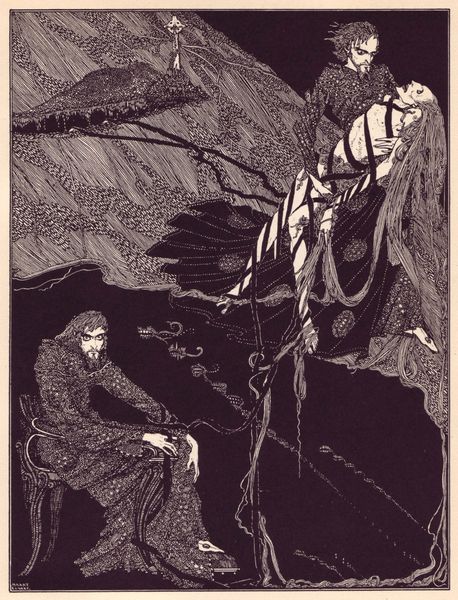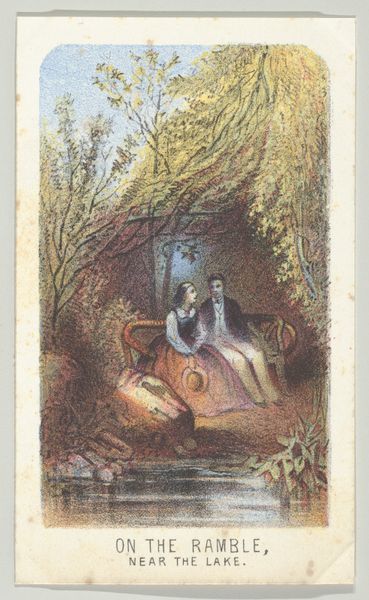
watercolor
#
narrative-art
#
landscape
#
figuration
#
watercolor
#
horse
#
watercolour illustration
Copyright: Public domain
Curator: Today, we are looking at "Illustration for Vyšehrad" by Artuš Scheiner, a captivating watercolor. What strikes you first about it? Editor: The cool tonality creates such a haunting atmosphere. The stark contrast between the rider and steed, illuminated against the dark cavernous background, gives it an almost dreamlike quality. Curator: Scheiner's skill lies in the composition. Notice how the artist masterfully uses line and shadow to guide the viewer’s eye from the rider atop the horse to the cave mouth. The repetition of rounded forms creates a sense of harmony. Editor: Speaking of skill, look closely at the watercolor technique. The gradations of color, especially on the horse's coat, suggest laborious layering and a control over the medium that is really compelling. This wasn't quickly dashed off. Curator: Precisely. We can interpret the scene through the lens of narrative. The figure’s garb is striking. Perhaps this depicts a character returning to a homeland—entering into a hidden world—or leaving the darkness. Editor: What interests me is the physical craft of illustration itself. Scheiner, whose details remain limited, would’ve undertaken significant printing and labor processes; illustrations like this were instrumental in the late nineteenth and early twentieth centuries for propagating imagery and ideas. It wasn't fine art but utilitarian. Curator: And yet, Scheiner elevates the illustration beyond the merely functional with careful symbolic arrangements of tone, shadow, and line. A beautiful illustration! Editor: Indeed. This is a strong testament to the way material constraints shaped artistic choices and legacies, then and now. It underscores how illustration became this vehicle for cultural exchange, not only through narrative but via the techniques employed.
Comments
No comments
Be the first to comment and join the conversation on the ultimate creative platform.
